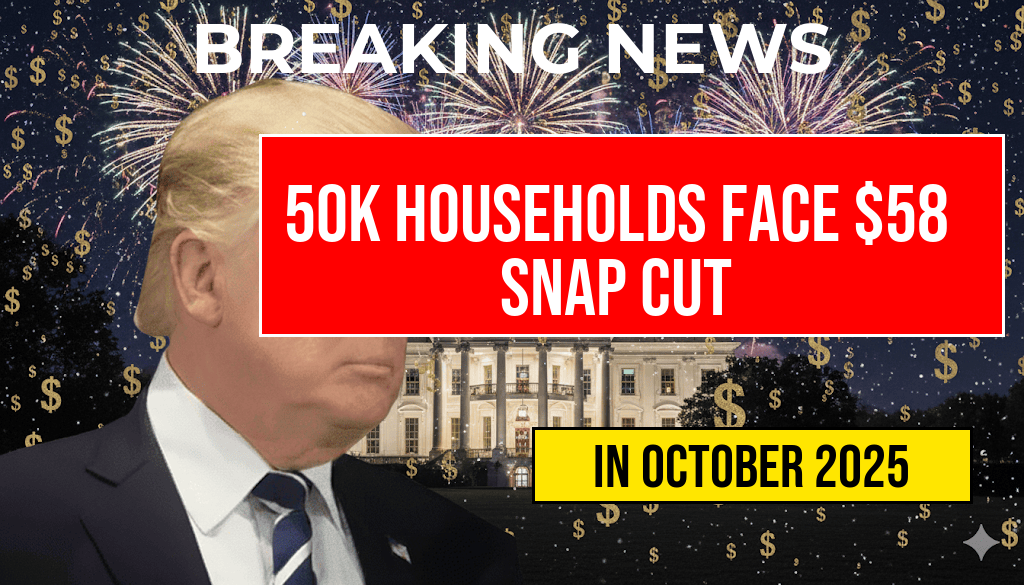In response to recent federal reductions affecting SNAP (Supplemental Nutrition Assistance Program) and Medicaid, several states are taking proactive steps to shield vulnerable populations from increased hardship. Among these, a significant move comes from the state of California, which has announced a fifty million dollar fund dedicated to mitigating the impacts of federal budget cuts on low-income families. This initiative aims to preserve critical safety-net services amid federal policy shifts that threaten to reduce assistance levels and eligibility. The state’s action underscores the growing concern among policymakers and advocates about the widening gap in social support programs, especially as federal funding becomes more restrictive. As federal authorities seek to trim budget deficits, states like California are stepping into a pivotal role, balancing fiscal pressures with the need to support their most vulnerable residents.
Federal Cuts Prompt State-Level Responses
Background on Federal Reductions
Over the past year, federal agencies have announced budget adjustments that result in significant cuts to SNAP and Medicaid. These reductions are part of broader efforts to curb government spending, but they threaten to reduce access to essential services for millions of Americans. For example, recent federal policy changes have limited the duration of emergency allotments for SNAP recipients, potentially removing benefits for nearly 20 million households nationwide (source: Wikipedia). Similarly, proposed Medicaid reductions are expected to limit coverage for certain treatments and tighten eligibility, impacting vulnerable populations such as the elderly, disabled, and low-income families.
State-Level Strategies to Offset Federal Reductions
Recognizing the potential hardship, several states have launched initiatives to cushion the blow of federal cutbacks. California’s recent $50 million allocation is among the most substantial, designed to extend benefits and increase outreach. Other states, including New York and Illinois, are exploring similar measures, either through increased state funding or policy adjustments that expand eligibility criteria.
Details of California’s $50 Million Fund
| Component | Description |
|---|---|
| Benefit Preservation | Funds will be used to prevent reductions in SNAP benefits for current recipients, maintaining levels despite federal cutbacks. |
| Outreach and Enrollment Assistance | Dedicated resources to ensure eligible residents are aware of and can access available benefits, particularly in underserved communities. |
| Healthcare Support | Additional funding allocated to local Medicaid programs to cover costs associated with federal reductions and expand access where possible. |
| Community Grants | Support for nonprofits and local agencies providing food and health services to vulnerable groups. |
Implementation and Expected Outcomes
The state government plans to channel the funds through existing social service agencies, with a focus on high-need regions such as Los Angeles, Fresno, and San Diego. Officials anticipate that these measures will help preserve access to nutritious food and essential healthcare, preventing an uptick in food insecurity and hospitalizations among low-income populations. State officials also emphasize that this funding complements federal initiatives rather than replaces them, underscoring the importance of state-federal cooperation in social welfare.
Broader Implications and Challenges
Political and Fiscal Considerations
The decision to allocate additional state funds reflects a broader debate over the role of states versus the federal government in providing social safety nets. Critics argue that reliance on state funding may be insufficient in the long term, especially if federal support diminishes further. Conversely, advocates highlight that state-level initiatives can be more targeted and responsive to local needs, providing an immediate buffer against federal policy shifts.
Impact on Vulnerable Populations
- Food Security: Without these measures, many households could face increased food insecurity, with children and elderly most at risk.
- Healthcare Access: Reduced Medicaid funding may lead to postponed treatments and unmet health needs among low-income and disabled individuals.
- Economic Stability: Cuts could destabilize local economies dependent on federal assistance programs, exacerbating poverty levels in affected communities.
Looking Ahead
As federal policies continue to evolve, states like California are likely to remain on the front lines, balancing budget constraints with social responsibilities. Experts suggest that coordinated efforts between federal and state governments, alongside community-based organizations, will be essential to mitigate adverse effects and maintain access to vital programs. For further insights into the structure and history of social safety-net programs, resources like Wikipedia’s Social Safety Net article provide comprehensive background.
Frequently Asked Questions
What is the purpose of the fifty million dollar allocation?
The state allocates fifty million dollars to counteract federal cuts to SNAP and Medicaid, aiming to support vulnerable populations affected by reduced federal funding.
Which federal programs are impacted by the cuts mentioned in the article?
The federal programs impacted are SNAP (Supplemental Nutrition Assistance Program) and Medicaid, both of which provide essential support for low-income individuals and families.
How will the allocated funds be used to address the federal cuts?
The fifty million dollars will be used to supplement state funding, ensuring continued access to food assistance through SNAP and healthcare coverage via Medicaid despite federal reductions.
What is the expected impact of this state initiative on residents?
Residents will benefit from maintained or enhanced access to nutrition and healthcare services, helping to mitigate the negative effects of federal funding cuts on low-income communities.
Are there any long-term plans to address funding challenges for SNAP and Medicaid?
The article does not specify long-term strategies, but the state’s immediate allocation demonstrates a commitment to protecting vital programs and may lead to further measures to ensure sustainable support for affected populations.








